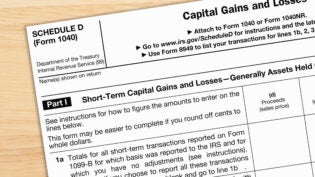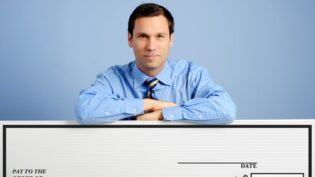
Many taxpayers engage in activities they enjoy and do it for a business purpose. Whether the IRS considers it as a business or hobby has important income tax implications. If the activity is considered a business, all legitimate substantiated expenses will be allowed and a loss can be deducted from other income. All income and expenses are reported on Schedule C.
If the activity is deemed to be a hobby, income is reported as other income on page one of form 1040 and expenses are deductible only to the extent of income from the activity—a loss is not deductible from other income. Business related expenses will be treated as a miscellaneous itemized deduction reduced by 2% of AGI. If the taxpayer doesn’t have total itemized deductions, including the hobby related expenses, that exceed the standard deduction, none of the expenses will be deductible.
Whether the IRS deems an activity to be a business or a hobby depends on several factors outlined below.
Presumption of Profit-Seeking Motive
In determining if an activity will be considered a business or hobby, the IRS uses a time period for earning a profit. If the taxpayer meets this requirement, the burden of proof is on the IRS. The taxpayer is presumed to have engaged in a for profit activity if a profit is made in at least three of five years, including the current year. For horse raising, racing, training, or showing, a profit must be made in two out of seven years, including the current year. This presumption does not necessarily mean that losses will automatically be allowed. The IRS can rebut this presumption if it considers that the activity was not conducted in a business like manner to earn a profit. These are explained later in the article.
Election to postpone determination of profit seeking motive
If an activity has losses in the early years and the IRS tries to disallow them as hobby losses, the taxpayer has an option to file Form 5213 (see below) to postpone the determination of whether the profit motive presumption applies. The postponement is until the end of the fourth taxable year (sixth year for horse activities) following the first year of the activity. If the activity produces a profit in at least three years (two for horse activities) of the five years (seven for horse activities) the profit presumption applies.
When the election is made, the taxpayer is agreeing to waive the statute of limitations for all activity-related items in the taxable years involved. The waiver also gives the IRS an additional two years after the filing due date for the last year in the presumption period to issue deficiencies related to the activity, if it is deemed a hobby. Form 5213 must be filed within three years of the due date of the return for the year the activity was started. If a deficiency notice, disallowing the loss, is received before the end of the three year period and an election has not yet been made, you can still make the election within 60 days of receiving the deficiency notice.
The election rules also apply to partnerships and S corporations and is binding on all partners or shareholders holding interests during the presumptive period [J.K. Lasser’s Your Income Tax 2013].
If you want a postponement for more than one activity, you must file a separate Form 5213 for each activity. However, you may file one form for more than one activity if all of the activities have the same presumption period. Be sure to describe each activity in detail and list the first tax year in which you were engaged in the activities. The automatic extension applies only to those deductions attributable to the activity and to any deductions (such as medical expenses or charitable contribution deductions) that are affected by changes.
Factors used to determine if the activity is a business or a hobby.
[Robert Gard, CPA, “Business or Hobby? The Nine Factors”, Tax Practice Corner, Journal of Accountancy, October 2013].
Regs. Sec. 1.183-2(b) lists nine factors for determining whether an activity is for-profit.
(1) How the taxpayer carries on the activity
The taxpayer should conduct the activity in a business-like manner. Important business like measures are marketing the product or service, advertising, keeping a separate checking/savings account for the business, keep adequate records and books to timely record the income and expenses, and emulating other profitable businesses.
(2) Taxpayer’s Expertise
The taxpayer should have extensive knowledge about the activity or profession, studied acceptable business methods, and consulted with experts in the field.
(3) Taxpayer’s time and effort in carrying out the activity
Example. Joe has a job in which he works full-time three days a week. In his off time, he mows lawns. The fact that he uses his personal time and effort for lawn mowing is an indication he enters into and carries on the activity with the actual and honest objective to make a profit.
(4) An expectation that assets used in an activity, may appreciate in value
Regs. Sec. 1-183-2(b) states that asset appreciation, such as land, may be considered in lieu of current profits.
(5) Taxpayer’s success in other activities
Even if the taxpayer’s current activity is not profitable, it may be considered a for-profit activity if the taxpayer was successful in the past converting other activities from unprofitable to profitable, particularly if they were similar to the present activity. If the taxpayer did not engage in any activities in prior years, then the other factors must be considered.
(6) The taxpayer’s history of income or losses from the activity
The economy and the income of his clients may play a role in how much business Joe, in the example above, may be able to generate and keep. His business may fluctuate with the economy causing occasional losses (see presumptive of profit rule above). However, if he is able to have profitable activities, this would likely indicate a for-profit activity.
(7) The relative amount of profits or losses
Regs. Sec. 1.183-(2)(b)(7) states: “the amount of profits or losses incurred, and in relation to the taxpayer’s investment and the value of the assets used in the activity, may provide useful criteria in determining the taxpayer’s intent.” (See presumptive rule above).
(8) Taxpayer’s financial status.
Other substantial sources of income available to the taxpayer may indicate the activity is a hobby.
Example: Harold is an adjunct professor at the local university teaching accounting and income tax three days a week. When school is not in session, he does not get paid. During his off time, he provides financial advice to small businesses and relies on this income to support himself. The fact that he is relying on his consulting to sustain himself when classes don’t meet, his consulting activities can be considered a for-profit activity.
(9) Whether the activity provides recreation or involves “personal motives”
An activity that has recreational appeal, coupled with other factors, may indicate a lack of a profit motive. If the activity lacks recreational appeal it is likely to be seen as a for-profit activity rather than a hobby.
After a tax return preparer reviews the records and prior year returns for the activity, it is possible to determine if the activity is for-profit based on these nine factors. However, there is no one factor or pattern that is conclusive. All facts and circumstances must be considered.
This article was originally published by TaxConnections
Author
Dr. Harold Goedde is a former college professor who taught income tax, auditing, personal finance, and financial accounting and has 25 years of experience preparing income tax returns and consulting. He published many accounting and tax articles in professional journals. He is presently retired and does tax return preparation and consulting. He also writes articles on various aspects of taxation. During tax season he works as a volunteer income tax return preparer for seniors and low income persons in the IRS’s VITA program.
Published: October 28, 2013
2836 Views
2836 Views











